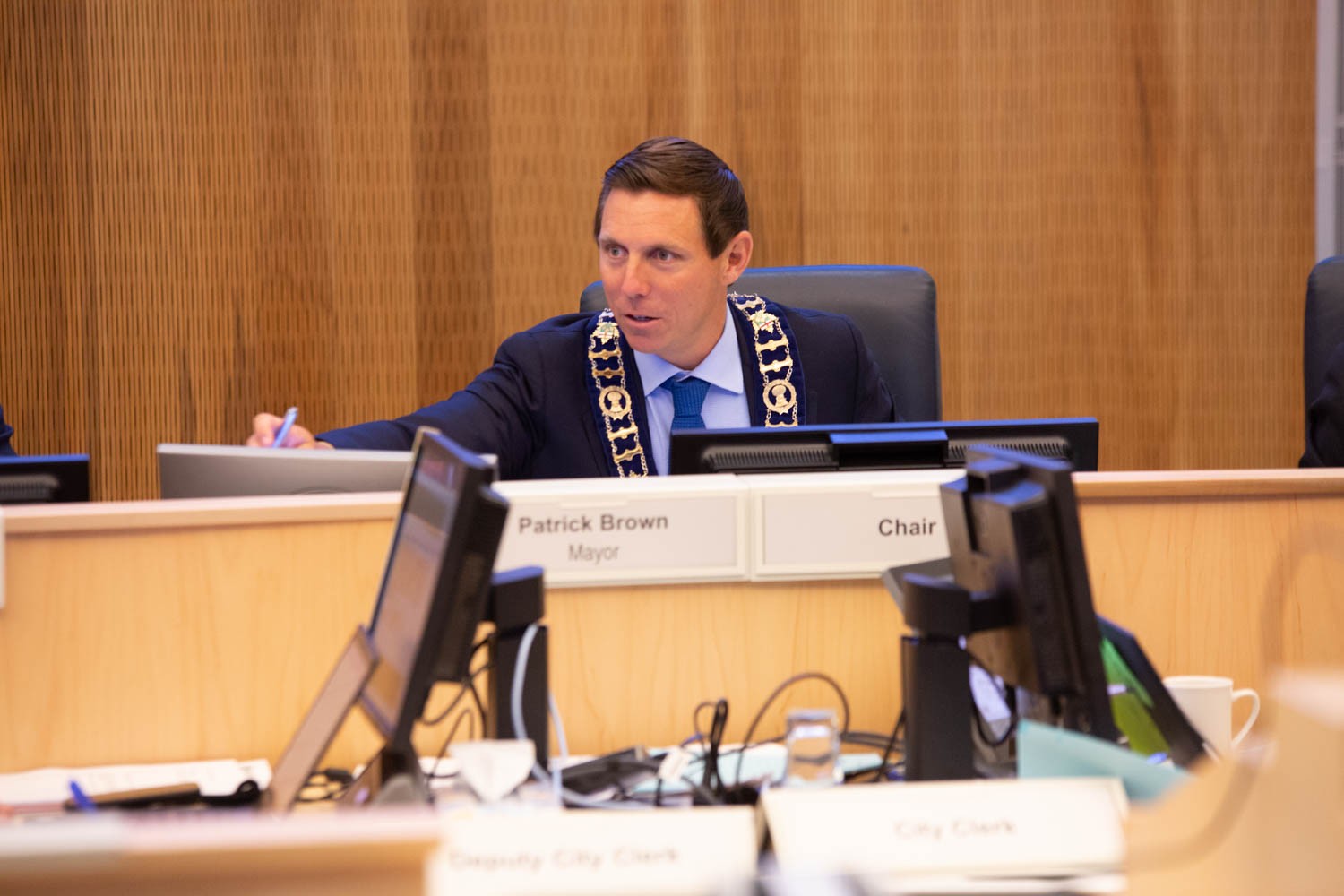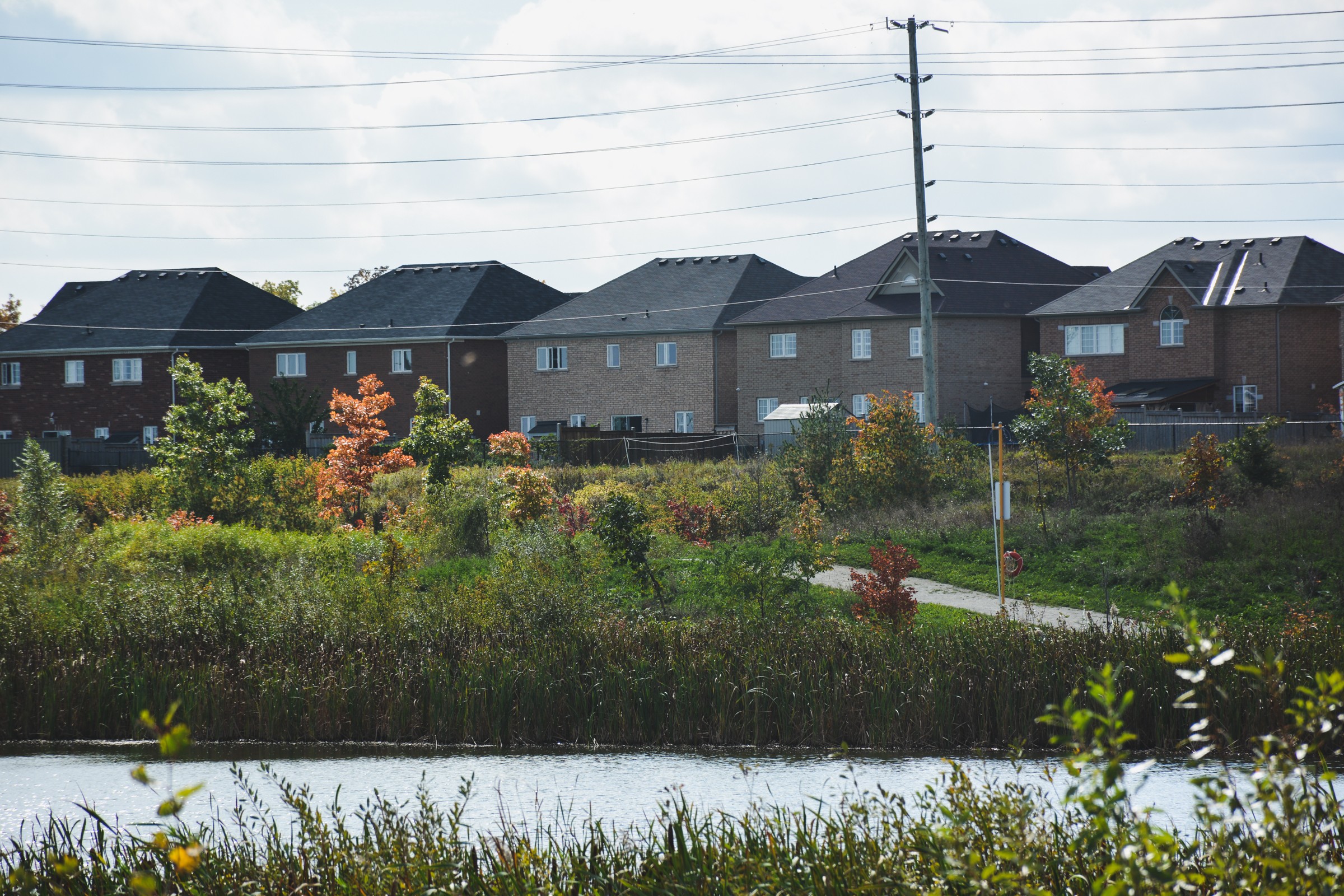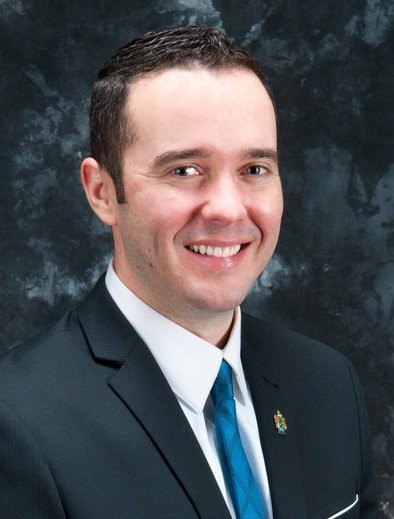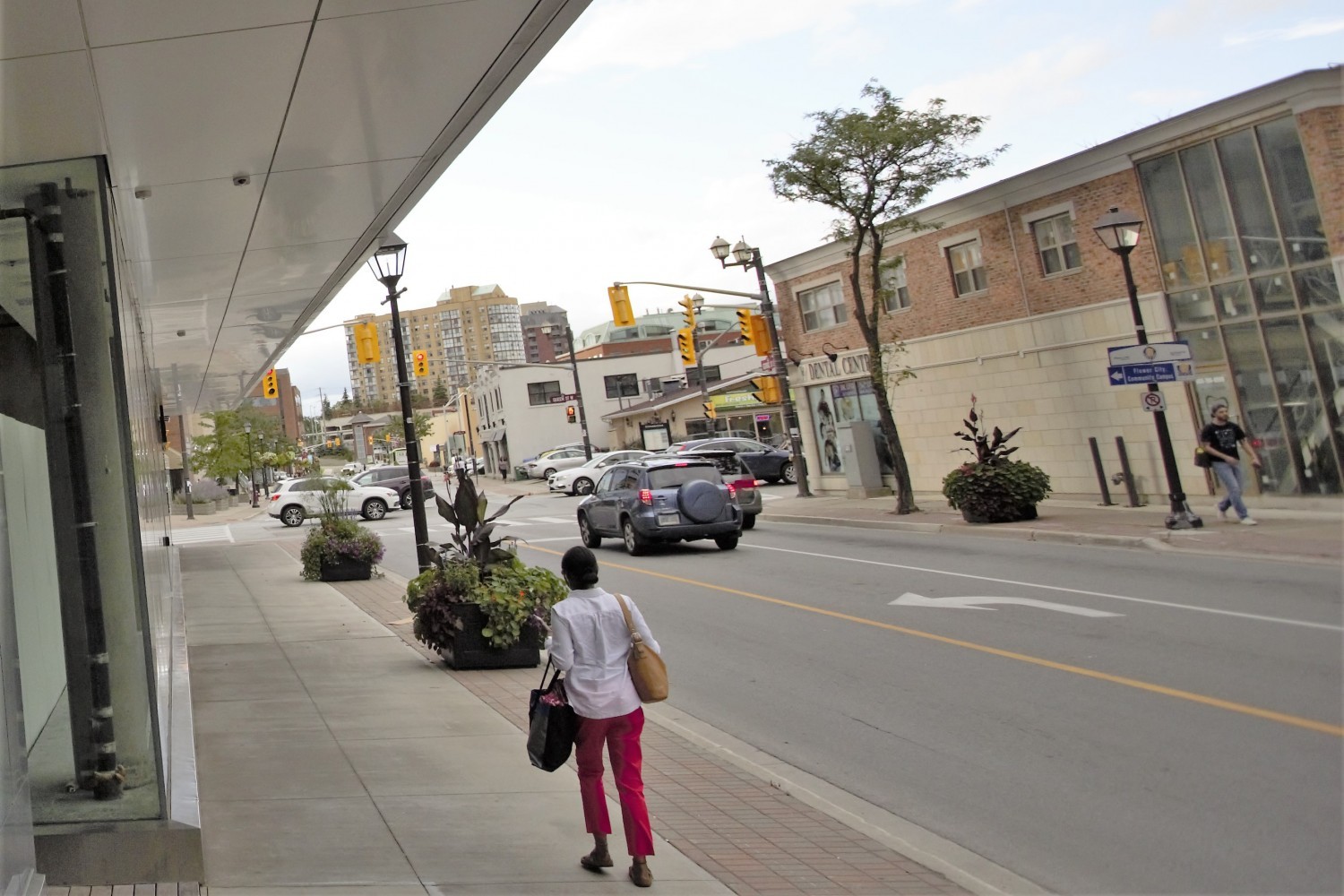
Brown’s pay-for-it-later approach to governing sees another tax freeze on City’s share of 2021 property bill
The sound of a gavel striking the dais at a late Wednesday meeting cemented Brampton’s 2021 property tax rate, which will remain frozen for the third year in a row.
The decision on the City’s portion of the bill came after a special council meeting that lasted just past the half-hour mark. It ended with a smile on Mayor Patrick Brown’s face, after he called the freeze a holiday gift for residents. The implications of this largesse on the city’s crumbling infrastructure were not included in his message. Nor was the fact that those who will benefit the most are comfortable house owners whose property value has skyrocketed over the past decade.

The tax rate on the local share for Brampton homeowners has been frozen for the third straight year.
Renters, including many battling on the frontlines of the pandemic, and others facing a precarious housing situation in the city, will not get the gift Brown handed to those who own their property.
There will likely still be an increase on the overall property tax bill residents and businesses will receive in 2021 because the Region of Peel has indicated it will have to raise its share to cover costs that cannot be deferred.
Local politicians like Brown have often hidden behind the Region, claiming tax freezes to enjoy the political support that comes with them, but failing to mention utility rates have skyrocketed in Peel over the last decade, with annual increases as high as 9 percent, while the tax rate on the region’s portion of the bill is also going up.
He spearheaded the move to freeze Brampton’s share – the same aggressive stance he took when pushing tax freezes during the previous two budget seasons after making it a campaign promise in 2018 – through a December 1 motion at Budget Committee, proposing nearly $10 million set for the 2021 reserve fund be pulled to pay for the decision. Councillors cited the ongoing pandemic as their reason for supporting Brown’s motion, many saying if ever there was a time for a freeze, this was it.
It’s a dangerous move.
Homeowners, including many who earn well above the city’s median income, will not contribute to the cost of inflation to run Brampton’s services, pay City staff and provide all the amenities and basic infrastructure they enjoy, while those desperate for help during the pandemic won’t likely get much support through the local municipality.
Future tax increases will have to make up for the “gifts” Brown has used to boost his popularity. If he chooses to move on from Brampton, tomorrow’s leaders will be left with the legacy of his pay-for-it-later approach to budgeting, scrambling to find money to cover mounting costs.
The City’s budget proposal asked for a 0.9 percent increase, much lower than a report from the previous council which stated an increase between 3 to 5 percent would be needed for years to maintain basic spending.
Brampton residents get a combined property bill from the City, Region, and Province (for its education portion) and are likely to see a modest increase in 2021 because of Peel Region’s anticipated 1.4 percent tax increase, to its share, according to Brampton’s proposed budget document.
Regional Council will not make its decision until the new year when Peel’s 2021 budget will be dealt with.
For a property assessed at $538,000 (the average value in the city) Brampton’s proposed 0.9 percent tax hike would have resulted in a $47 increase, going a long way in funding much needed infrastructure for residents. This includes fixing aging roads and bridges, and approved plans to invest in the neglected downtown core, which were not mentioned in the budget documents.
Instead of the modest increase, Brown led the push to keep the City’s share of the property tax bill flat in 2021.
Under new chief administrative officer David Barrick, who Brown selected despite a scandal hanging over the former Port Colborne councillor, who brought no experience running even a small town or city department, much less the ninth largest municipality in the country, the budget was missing key details.
Barrick, who was implicated as one of the key actors in the Ontario Ombudsman’s “Inside Job” report into the fraudulent hiring of Niagara’s former CAO, failed to include the current infrastructure deficit, did not explain what is happening with the Downtown Reimagined project (put on hold by Brown) and kept the list of deferred infrastructure spending out of the budget documents.

Brampton CAO David Barrick
There is also little explanation of how reserve accounts will be used, where the money will go and, alarmingly, Barrick did not factor the impacts of the pandemic in 2021 into any of the financial projections.
The Province, the federal government, Mississauga, Toronto and most other cities are factoring the pandemic’s effects on finances to plan for the coming year.
Barrick and Brown have not explained why they ignored this and what they will do to make up for costs which they failed to account for in their budgeting for 2021.
Brown has also refused to explain his own spending, including about $44,000 in legal fees he charged to Brampton taxpayers and how he is paying for a bloated staff that has added numerous positions not previously seen in the mayor’s office.
Questions are also mounting about other staff now working with Barrick, including at least two of the other former Niagara officials implicated in the CAO-hiring scandal there, who are now both working for the City of Brampton in senior roles directly under Barrick.
The Pointer has sent numerous questions to the City about recent hiring, but under Barrick and Brown it appears that public transparency is not a priority as answers have not been provided.
One positive for downtown was highlighted in the operating and capital budget presentations from the Public Works and Engineering Department. Acting commissioner Jayne Holmes asked council to add $5.9 million to the 2021 capital budget to pay for the design of the Riverwalk project to mitigate the flood risk in the city centre. Initially, no money was allocated in the proposed budget toward the project in 2021, but council approved the request, as work to finally address the decades-long barrier to downtown redevelopment can’t move forward without the city’s needed design plan.
Brown has already postponed downtown infrastructure work that had been approved prior to his election, kicking it down the road despite badly needed repairs and redevelopment of the withering area.

Questions continue to loom about how repairs and upgrades to infrastructure in Brampton's downtown will be covered after three consecutive tax freezes on the city's share.
Downtown Brampton sits on a floodplain and is designated as a Special Policy Area (SPA) by the Province, and little change can happen in the area unless plans to mitigate the flood risk from Etobicoke Creek are made.
The Toronto and Region Conservation Authority led an environmental assessment examining options on how this could happen. The assessment was approved by the Ministry of Environment, Conservation, and Parks in September, allowing 19 of the 31 hectares currently under the SPA to be removed if a design that accommodates the EA’s recommendation is created and the project is eventually completed.
It will require the widening of the existing flood bypass channel and the federal government recently committed about $39 million (it could be less depending on the need) toward the project, which is projected to cost around $100 million. The City has not budgeted any money for its share of the cost.
It’s been a common theme under Brown’s two years in office. While calling for politically popular tax freezes he has pushed projects to the backburner and claims to be championing game-changing features for the city such as a new hospital, a first stand-alone university campus and major downtown renewal, but refuses to commit money needed to do any of it.
This year’s budget document, the first put together under Barrick, did not have an accurate description of what the infrastructure needs currently look like, details that have been included in previous budgets.
It’s a troubling approach, considering this is primarily what a budget document is supposed to do: detail the needs of residents, and the costs required to meet those needs which are covered by taxpayers.
The 2019 draft budget, put together before Barrick was hired under Brown’s supervision, stated the infrastructure gap was $246 million, citing the 2018 State of Local Infrastructure (SOLI) report. The 2019 SOLI report increased this number to $337 million. The gap defines the cost difference between the infrastructure that is currently available and what is actually needed, while also factoring the price to repair or replace out-of-date infrastructure. With the city’s population continuing to grow, the need will continue to increase.
The City told The Pointer this information was not included as it’s currently updating its Corporate Assessment Management Plan, which includes capital projects. It’s unclear why this crucial information which is readily available to City departments was kept out of the public budget documents.
The City says the management plan is scheduled for the fourth quarter of 2021, meaning taxpayers will be in the dark for almost two years about the needs they have to pay for.
Brown has provided no information about how he plans to pay for the City’s share of the Phase-2 expansion of Peel Memorial, which many are demanding be converted into Brampton’s second full-service hospital. He wrongly publicly claimed Premier Doug Ford committed to a third hospital (Ford’s office confirmed early in the year that Brown mistook remarks about Peel Memorial’s Phase-2 expansion for a commitment to another hospital). Brown has not explained how he plans to pay for the local share of that hospital.
He has also pushed a downtown LRT with a tunnel option that staff said could cost as much as $1.7 billion. Once again, despite lobbying for the plan, Brown has failed to secure any money for it and has not indicated how he will pay for his own idea.
He hasn’t detailed where the money for the postponed Downtown Reimagined project will come from. Nor has he explained how the Brampton University plan will be paid for. It’s a similar story with badly needed transit expansion, long-term plans for basic infrastructure such as roads and how the remainder of the City’s assets are being managed to ensure proper upkeep.
Budget discussions this year lasted about 14 hours in total, with little debate after departments outlined their positions for the coming year. The eleven elected members on council failed to outline or detail key priorities such as how the city will adhere to its own climate emergency declaration, what will be done to continue expanding transit, with the ongoing challenges of the pandemic, how it will budget for the local share of desperately needed healthcare expansion, how downtown revitalization will be paid for, and the list goes on.
The proposed capital budget, with a cost of $476 million, is more than what was allocated the year prior, but falls $117 million short of the $593 million needed to meet spending requirements for 2021 that were detailed in the 2020 budget. The decrease is tied to a number of different projects either being pulled in 2021, or receiving less money than originally budgeted.
The Public Works and Engineering department represents the bulk of this loss. Within it, the Capital Works division is impacted by $103 million; including $58 million for the widening of Williams Parkway in Wards 1 and 7, which was taken off the 2021 list. It is one item that addresses council’s climate change pledge, as members scrapped the road widening, despite $14 million that was already spent on the project.
In November, council voted on resurfacing the existing road over three other options that would have added anywhere between one and three lanes. The design process will last between 2021 and 2024, and construction will begin once the design and other details are approved, according to the City’s website. It’s not clear why funding was removed when the project will take place in the near future.
Of the $767 million approved operating budget, 57 percent is going toward salaries, wages and benefits.
The City has trumpeted its contribution to reserves but has failed to detail what these accounts will be used for. Instead of allocating funds for known expenses and showing this transparently to the public, Barrick and Brown use reserves in an unusual way, like a blank cheque. It’s unclear how funds taken out of reserves since he took office have been used. Line-item budgets at the beginning of the year, with extremely detailed accounting for where every dollar will go, are supposed to remove the guesswork for the public, so they know how their money is being spent beforehand.
Reserve funds may be further depleted if the City doesn’t get more money from the provincial and federal governments to offset costs related to COVID-19 lockdowns. The city is currently facing a $20.5 million deficit for these impacts and plans to cover them with the General Rate Stabilization (GRS) Reserve account, if it doesn't get enough funding from the second phase of the Province’s Safe Restart Agreement.
The reserve is used as an emergency fund and is supposed to have 10 percent of the operating budget available at the start of the year. While $76.7 million is needed, only $69.5 million is available at this time. If the pandemic-related deficit has to be covered in full, the fund will drop to $49 million. Municipalities will be informed of funding approval by the end of the year, the City said, and funding will come in the early months of 2021.
Barrick said the pandemic’s “temporary nature” meant it wasn’t considered in the 2021 budget. It’s unclear who made this decision, as he has no experience in municipal financing. The City’s previous treasurer, David Sutton, is no longer listed as an employee. The key role is now being filled on an acting basis. It’s unclear why Sutton is no longer the treasurer and his name does not appear on the budget documents.
The Pointer asked for clarification around Barrick’s statement that the pandemic was not factored into the 2021 budget, despite its ongoing impacts, which will almost certainly last throughout the coming year, and recognition of this in the document itself.
No clarification was provided and staff referred to the budget document which states: “The City does anticipate that there will be COVID impacts in 2021,” and stabilization reserves will be used to “weather the storm”.
Like so much with Patrick Brown, his pay-for-it-later ways could end up being a headache for others to take care of down the road.
Email: [email protected]
Twitter: @nida_zafar
Tel: 416 890-7643
COVID-19 is impacting all Canadians. At a time when vital public information is needed by everyone, The Pointer has taken down our paywall on all stories relating to the pandemic and those of public interest to ensure every resident of Brampton and Mississauga has access to the facts. For those who are able, we encourage you to consider a subscription. This will help us report on important public interest issues the community needs to know about now more than ever. You can register for a 30-day free trial HERE. Thereafter, The Pointer will charge $10 a month and you can cancel any time right on the website. Thank you.
Submit a correction about this story


